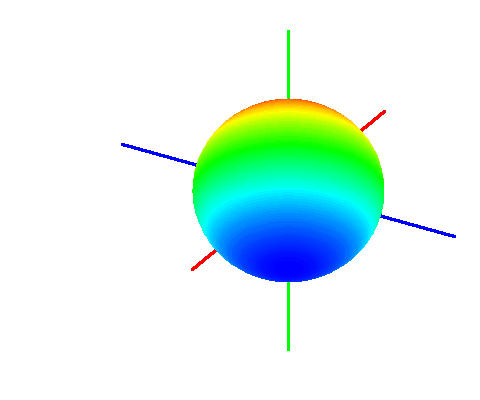Hello, guys! It’s me! Warotan!
So…Who are you?→ABOUT ME
Let’s calculate the volume of an \(n\) dimensional ball!
We use it in so many field (statistical mechanics, for example)
I would like to tell you the construction of this page and please select where you start to read to your interests.
What form does the quantum have??
The volume of \(n\) dimensional ball.
Can you anticipate the form?
Let’s think about it.
To begin with, because it is very difficult to start from the \(n\) dimensional, we do with a 3 dimensional one.
As we already think about it in this article, the volume of a 3 dimensional ball with radius \(r\) is
It is proportional to \(r^3\).
Here, The area of a circle with radius \(r\) is
It is proportional to \(r^2\).
The area in 2 dimensional plane corresponds to the volume in 3 dimensional space.
“Volume” shows the quantity of the biggest shape in the “space”.
Therefore, an area in a plane can be thought as a general “volume”.
The area of a circle (2 dimension) is proportional to \(r^2\), and the volume of a ball (3 dimensional) is to \(r^3\).
So, we expect that the volume of \(n\) dimensional ball is proportional to \(r^n\).
Assuming
\(A_{n}\) is a constant independent of \(r\).
The volume of an \(n\) dimensional ball
We will use a gamma function (English version coming soon)
to express the volume.
It is an integration of a gaussian.
Here, let us consider the integration of a product of \(n\) gaussians with different variables like
On the other hand, we can calculate this integration in a different way.
First, the \(n\) dimensional volume element \({\rm d}x_{1}{\rm d}x_{2}\cdots{\rm d}x_{n}\) can be written as \({\rm d}V_{n}\).
Next, the product of \(n\) gaussians can be written as \({\rm e}^{-\left(x_{1}^{2}+x_{2}^{2}+\cdots +x_{n}^{2}\right)}\);
Therefore,
The exponent of the integrand is the square of the distance from the origin to the point \(\left(x_{1},x_{2},\cdots ,x_{n}\right)\) in Euclid space.
Using the assumption we made above, \(V_{n}\sim r^n\), we can rewrite it as
We have already seen the form.

Yes! It is a gamma function!
They are the same if we put \(z=\frac{n}{2}\).
The above equation can be written as
The \(A_{n}\) is
In the end, the volume of an \(n\) dimensional ball is
The gamma function shows again!
Summary
Now, that’s all what I wanted to write.
This time, we calculated the volume of an \(n\) dimensional ball.
It is a common quantity in math or physics (and so on).
Seeing or hearing \(n\) dim-ball, you will get uneasy but get accustom to it!
Thank you for reading and please spread this blog if you like.
If you have any comment, please let me know from the e-mail address below or the CONTACT on the menu bar.
tsunetthi(at)gmail.com
Please change (at) to @.
Or you can also contact me via twitter (@warotan3)



